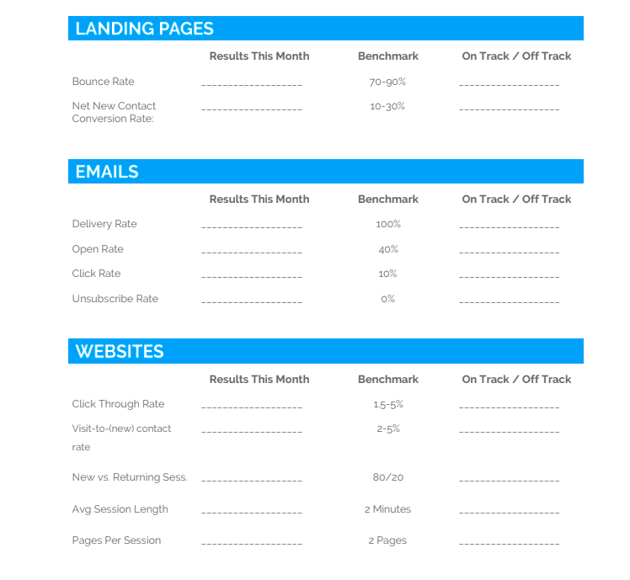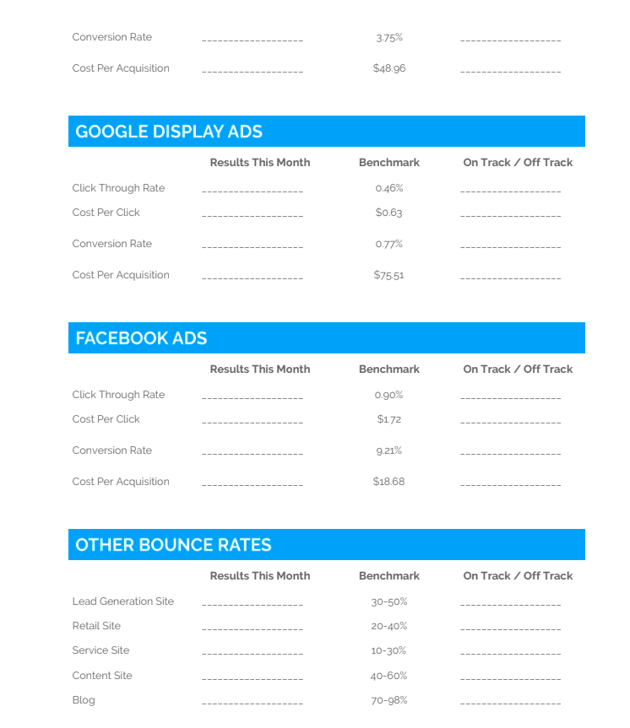/Stock%20images/businessman%20hand%20working%20with%20new%20modern%20computer%20and%20business%20strategy%20digital%20layer%20as%20concept%20%20%20%20%20%20%20%20%20%20%20%20%20%20%20%20%20%20%20%20%20%20%20%20%20%20%20%20%20%20%20.jpeg?width=1200&height=800&name=businessman%20hand%20working%20with%20new%20modern%20computer%20and%20business%20strategy%20digital%20layer%20as%20concept%20%20%20%20%20%20%20%20%20%20%20%20%20%20%20%20%20%20%20%20%20%20%20%20%20%20%20%20%20%20%20.jpeg)
What is ROI?
According to Medium, return on investment, or ROI, refers to the amount of money you generate after making an investment in something.
If you work in marketing, it's expected that you can identify different marketing performance measurements and explain what they mean and the impact it has on your business. That's a lot.Understanding what metrics and benchmarks to use that will show and explain the ROI on your company's marketing efforts is critical. Your boss wants to know the money and time being spent on marketing is investment versus a cost for the company.

Marketing and ROI
When you think about how your company is going to grow and succeed, it's easy to automatically jump right into asking, "how can we generate the most revenue?" However, today we see a huge amount of emphasis being placed on how customer satisfaction, engagement, and brand awareness contribute to the success of a company. The results from the latter marketing performance metrics are yet another way for you to prove the money being invested into marketing is generating a higher ROI.
The definition of ROI should be different in the eyes of marketing professionals. Although it's undoubtedly important to show your marketing efforts are generating revenue — this isn't the only true form of ROI.
It's your responsibility as a marketing expert to understand the forms of ROI and explain their importance. Understanding and explaining how marketing and ROI connect, reinforces the notion that your marketing efforts are credible and supported by numbers.
But, before you look into your results, numbers, and ultimately ROI from your marketing efforts — it's important that you begin with a solid starting point. Your goals, strategies, and benchmarks. You have to know where you are, where you are going, and why you are going there to pick the key performance indicators (KPIs) that can appropriately help measure your company's return on marketing investment.
Define your Strategy and Set Goals
Figure out where you want to be and how you're going to get there. Your content marketing efforts can't be measured if you don't have a strategy to go back and analyze. Strategies and goals are the definitions of your Merriam-Webster dictionary. They should be clean, clear, and easily understood. Making sure your entire team also understands your strategy and can clearly define what your tactics and goals are, is essential. If everyone is on the same page, the process of identifying what worked and what didn't at your monthly or quarterly review will be that much easier.
Without a strategy, you will just be making guesses about how you might have reached that high or low ROI. Be strategic and create a plan that will ensure you have results that are significant.
Benchmark Worksheet
Here are some marketing metrics and benchmarks you can use to show your boss the ROI in the marketing you are doing. Download the book of benchmark worksheet here:
- Bounce rate
- Conversion rate
- Delivery rate
- Open rate
- Click & click-through rate
- New vs. returning sessions
- Average session length
- Pages per session
- Cost per click
- Cost per acquisition
- Revenue generated

Reporting & Results
When you calculate your results from a marketing campaign or content marketing, it's important to dig deep. Remember a chart is not a report you should be giving to your boss because it doesn't tell the whole story.
It doesn't explain how you got your results or where they came from. A true ROI report that supports marketing doesn't include email open rates or website visits. Your report should be specific and clarify how you got the revenue or results from the marketing effort. They also need to take into account how other sources may have contributed to an increase in revenue or high ROI.
For example, if you're posting blogs on your website to increase website traffic, brand awareness, and hopefully revenue — you'll want to make sure you identify where all website traffic is coming from. Are people going to your blog first and then searching your website after?
Are users clicking a Facebook ad that brings them to the website? How can value be measured from your blog? These are the questions you will want to be answering in your reports because they answer the "how" you get the numbers you're getting. We know that it might seem like we are asking you to measure and generate results that are impossible to identify ... but follow these three reporting steps and your final report will support all of your hard work.
- Make it clear what has been factored into your strategy
- Show and explain your ROI (or lack thereof)
- Learn from your results and provide takeaways for your next strategy
Marketing Can be Messy
It's easy to get lost or confused when dealing with marketing and measuring or identifying results. Sometimes that social media reach or sales goal you wanted to happen, just didn't. And that's okay.
Your marketing plan should have different tactics in the strategy that aim to produce results that will bring you closer to your goal. Think A+B = C. So what happens when your goal "C" turns out to be an "S" and something you weren't expecting — was your marketing campaign a flop, necessarily? Whether you reached the goals you had in place or not, you gained some sort of insight about your company or consumers from your marketing efforts. So it was definitely not a flop.
What should you do with those results? The final step is to ask yourself what you learned from them. What did they teach you about your consumer, website, or social media presence? These results will be the backbone for your next strategy. They provide insight into what worked and what didn't and guide you into creating stronger and more efficient content.
With an effective strategy, content marketing tactics, and numbers that back up your results — you'll be able to explain how and why your marketing produces a high ROI. This skill will allow you the opportunity to prove just how much of an asset your team and the work you do is for your company. Marketing can be hard to measure — but changing the way you use and measure your content to support ROI is a step in the right direction.



